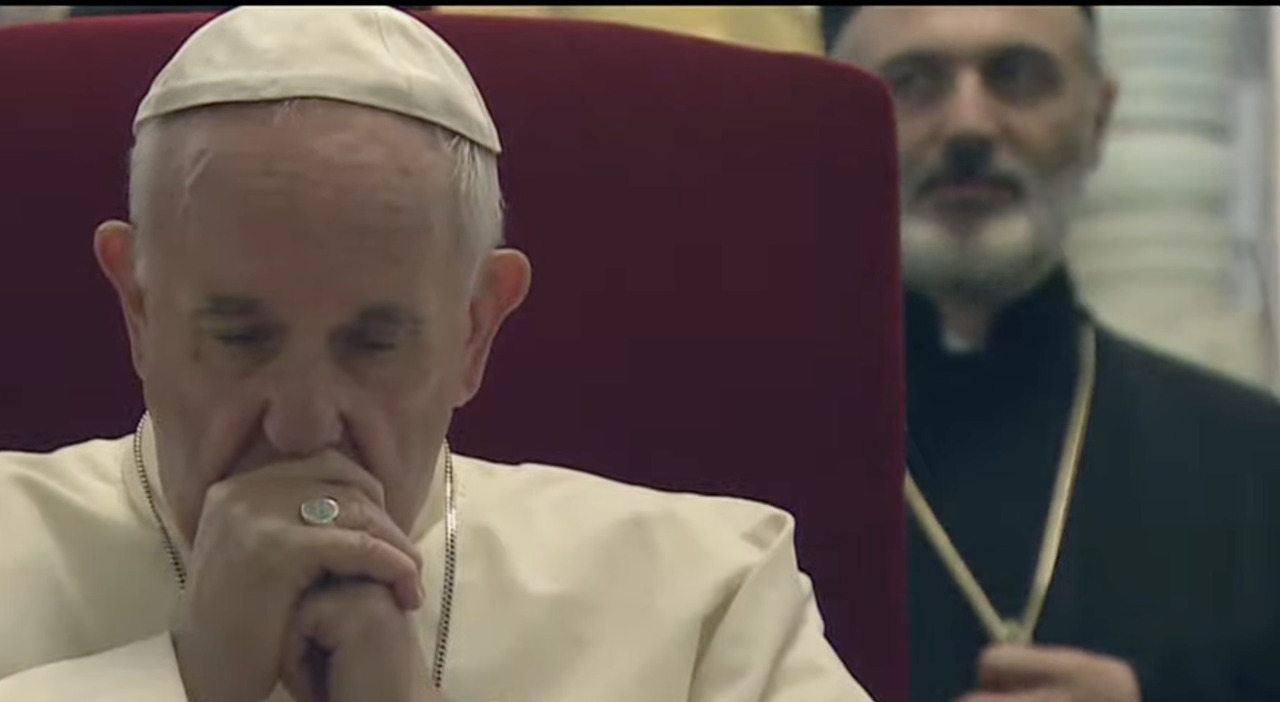There is no one in hell. Not even the damned souls, even the worst ones. Pope Francis on TV with Fabio Fazio, when asked on the subject, definitively endorsed the theological thesis that there is actually no one in that terrifying place. Of course, he explained that this is his personal "hope" and not a "dogma of faith. However - he pointed out to viewers - I like to think of hell as empty and I hope it is a reality.
CONFLICT
The possibility that hell is an eternal place without inhabitants has been attributed to one of the greatest Catholic theologians of the 20th century, the Swiss Hans Urs von Balthasar, although he always denied ever saying such a thing. The misunderstanding dates back to the 1980s, following a conference on the thought of Adrienne von Speyr that took up his eschatological reflection. Von Balthasar only claimed that hoping for the eternal salvation of all men is not contrary to faith. On the contrary. It is a thread already elaborated in the past by several Fathers of the Church, including Origen and Gregory of Nyssa and shared by contemporary theologians such as Guardini and Daniélou and de Lubac.
John Paul II in a catechesis on hell spoke of an empty hell, without anyone, but as a mysterious hypothesis: "damnation remains a real possibility, but we are not given to know, without special divine revelation, whether and which human beings are actually involved". In fact, the great question of faith remains hanging and without certain conclusions, even though there is a rather explicit passage from the Gospel of Mark that says: "And these will go to eternal punishment, but the righteous to eternal life".
Covid, the pandemic's assist to exorcists: "Fewer cases but all definitely of the Evil One"
The dilemma has always been the subject of harsh as well as very learned theological battles. Does hell exist? And if it exists: what is it like? Do the bad guys really end up in eternal flames? It was even at the center of denials by the Vatican. This happened recently when Pope Francis, in one of his first interviews given to the late founder of Repubblica, Eugenio Scalfari, chatting with him privately at Santa Marta (without knowing that his words would end up in the newspaper) hypothesized an empty hell. He explained that the goodness, greatness and mercy of God towards men is immense. "Those who repent are not punished, they obtain God's forgiveness and go among the ranks of the souls who contemplate him, but those who do not repent and therefore cannot be forgiven disappear. There is no hell, there is the disappearance of sinful souls". The Vatican was forced to run for cover and deny Scalfari, explaining that none of the phrases in quotes should be attributed to the Holy Father, read an official statement.
The ground for reflection being so slippery and complex could only raise an endless uproar even for a statement by the General of the Order of Jesuits, Arturo Sosa Abascal, who, a few years ago, during a round table, argued that the devil is certainly not a little red being, with horns, with a pitchfork and a tail. "We must understand the cultural elements to refer to this character. In the language of Saint Ignatius, it is the evil spirit that leads you to do things that go against the spirit of God. It exists as evil personified in different structures but not in people, because it is not a person, it is a way of carrying out the evil present in human life (...) so the devil exists as a symbolic reality, not as a personal reality" Sosa explained. Minimizing the power of Satan made Father Francesco Bamonte, already president of the International Association of Exorcists (Aie), jump in his chair, who in a statement defined Father Sosa's words as "serious and disorienting", especially if taken literally and estranged from the situation in which they were expressed.
"The Evil One advances". Here is the exorcists' vademecum to recognize possession
The "clarification"
To shed light and help the faithful not to get too confused, years ago, the Catholic Civilization under the direction of the great Father Gianpaolo Salvini, entrusted the task of clarifying once and for all the topic by distinguishing between the many theological hypotheses and the magisterium. Father Giandomenico Mucci, author of a learned intervention still valid today, noted: "The Church's Magisterium on hell teaches three things. The first: after earthly death there is a state, not a place, that belongs to those who have died in grave sin and have lost sanctifying grace with a personal act. It is the so-called retribution of the wicked. The second: this state involves the painful deprivation of the vision of God (penalty of damage). The third: in this state there is an element that, with a New Testament expression, is described as 'fire' (penalty of sense). The two penalties, and therefore also hell, are eternal. The reader who wants to know the centuries-old dogmatic documentation can consult any theological treatise on eschatology".
Father Amorth, farewell to the world's most famous exorcist: he had 600 requests for rites a day
This article is automatically translated
